The Lifting Operations and Lifting Equipment Regulations 1998 (LOLER) came into force on 5 December 1998, aiming to ensure the safe use of lifting equipment at work.
Overview of LOLER 1998
The Lifting Operations and Lifting Equipment Regulations 1998 (LOLER) were enacted to ensure the safe use of lifting equipment at work. Implemented on 5 December 1998, these regulations apply to all premises and work situations covered by the Health and Safety at Work Act 1974. LOLER builds on the Provision and Use of Work Equipment Regulations 1998 (PUWER), focusing specifically on lifting operations. It applies to both new and existing lifting equipment, emphasizing the need for proper maintenance, examination, and safe use to prevent risks to employees and others. The regulations are supported by an Approved Code of Practice (ACOP) and additional guidance from the HSE.
Enactment and Implementation Date
The Lifting Operations and Lifting Equipment Regulations 1998 (LOLER) were made on 15 September 1998 and laid before Parliament on 25 September 1998. The regulations came into force on 5 December 1998, under the authority of the Health and Safety at Work Act 1974. This implementation date marked the official enforcement of LOLER, aiming to enhance safety standards for lifting operations and equipment across various workplaces. The regulations were designed to address specific risks associated with lifting equipment, ensuring compliance with updated safety measures.
Legislative Background
The Lifting Operations and Lifting Equipment Regulations 1998 (LOLER) were established under the Health and Safety at Work Act 1974, specifically targeting the safe use of lifting equipment; These regulations implemented the lifting provisions of the Amending Directive to the Use of Work Equipment Directive (AUWED, 95/63/EC). LOLER aimed to harmonize UK legislation with European standards, ensuring enhanced safety measures for lifting operations. This legal framework provided a comprehensive approach to managing risks associated with lifting equipment, reflecting the evolving needs of workplace safety in the late 20th century.
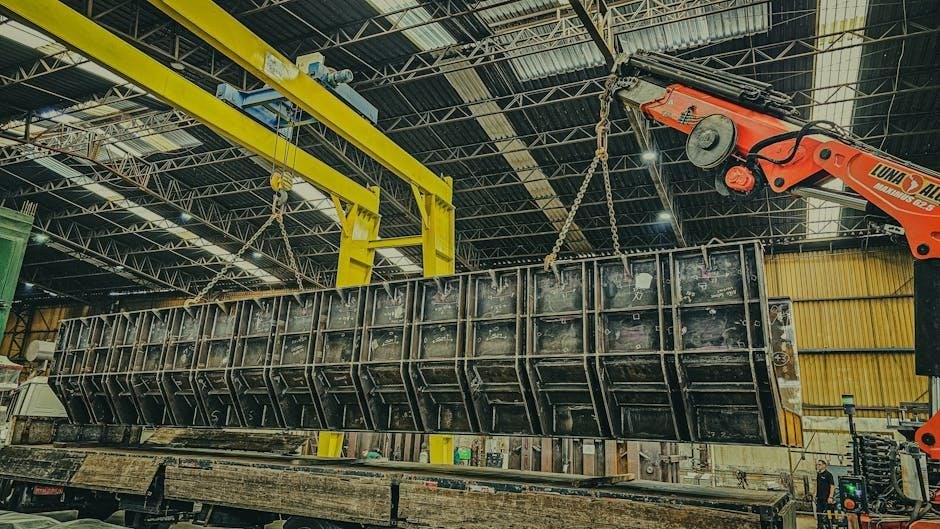
Scope and Application of LOLER 1998
LOLER 1998 applies to all premises and work situations subject to the Health and Safety at Work Act, covering both new and existing lifting equipment used at work.
Premises and Work Situations Covered
The Lifting Operations and Lifting Equipment Regulations 1998 (LOLER) apply to all premises and work situations subject to the Health and Safety at Work Act 1974. This includes factories, offices, shops, hospitals, construction sites, warehouses, farms, and any other workplace where lifting equipment is used. The regulations cover both public and private sectors, ensuring safe lifting operations across various industries. They apply to all lifting equipment used at work, regardless of when it was manufactured, emphasizing a proactive approach to workplace safety and compliance.
Relationship with the Health and Safety at Work Act 1974
LOLER 1998 is made under the Health and Safety at Work Act 1974 (HSW Act), which provides the framework for workplace health and safety law in the UK. While the HSW Act sets general duties for employers, employees, and others, LOLER builds on these by specifying detailed requirements for lifting operations and equipment. Together, they ensure a comprehensive approach to managing risks associated with lifting activities, reinforcing the overall commitment to workplace safety and legal compliance. This relationship underscores the importance of integrating LOLER with broader health and safety practices.
Application to New and Existing Lifting Equipment
LOLER 1998 applies to all lifting equipment used for work purposes, regardless of when it was manufactured or first used. This includes equipment in use before the regulations came into force on 5 December 1998. Employers and duty holders must ensure that both new and existing equipment complies with the requirements, such as proper maintenance, inspection, and safe operation. This ensures consistent safety standards across all lifting equipment, avoiding exemptions based solely on the equipment’s age or installation date.
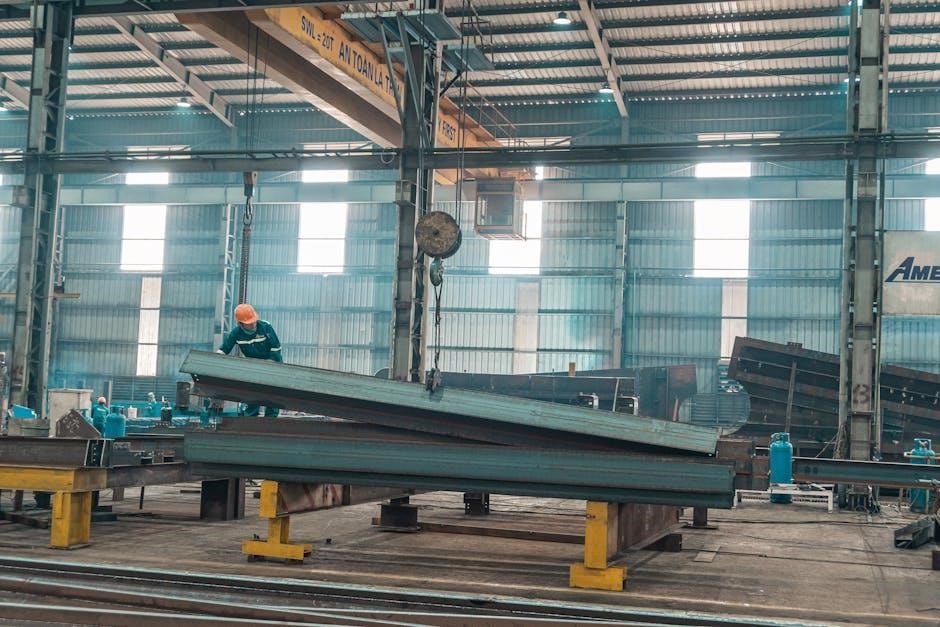
Key Provisions of LOLER 1998
LOLER 1998 establishes duties for employers to ensure lifting equipment is safe, properly used, and regularly inspected. It mandates thorough examinations and maintenance to prevent risks.
Duties of Employers and Duty Holders
Employers and duty holders must ensure lifting equipment is safe for use, suitable for its intended purpose, and maintained regularly. They are required to conduct thorough examinations and keep records. Additionally, they must provide adequate training and supervision for operators. These duties aim to minimize risks associated with lifting operations and ensure compliance with the regulations. Proper planning and organization of lifting operations are also essential responsibilities. Failure to comply can result in legal consequences, emphasizing the importance of adhering to these obligations. Employers must remain vigilant in upholding these standards to protect both employees and equipment.
Safe Use of Lifting Equipment
The safe use of lifting equipment is a cornerstone of LOLER 1998, ensuring equipment is operated within its design limits. Employers must guarantee that equipment is suitable, maintained, and regularly examined to prevent risks. Operators should follow proper procedures and receive training. Records of inspections and maintenance must be kept. Compliance with these measures ensures the safety of employees and prevents accidents. Proper planning and oversight of lifting operations are critical to achieving these goals. Adherence to these standards minimizes hazards and promotes a safer working environment. British Standards provide additional guidance for compliance.
Examination and Inspection Requirements
LOLER 1998 mandates thorough examination and inspection of lifting equipment to ensure safety and compliance. Equipment must be examined before its first use, after installation, and at regular intervals by a competent person. Records of these examinations must be maintained, detailing any defects or issues found. Non-compliance with these requirements can result in legal penalties and increased workplace risks. The regulations emphasize the importance of proactive maintenance and inspection to prevent equipment failure and ensure the safety of employees involved in lifting operations. Proper documentation is essential for accountability and regulatory adherence.
Planning and Organizing Lifting Operations
LOLER 1998 emphasizes the importance of proper planning and organization for all lifting operations. Employers must conduct thorough risk assessments and ensure that lifting operations are meticulously planned, taking into account the equipment, load, and environment. Clear communication and defined roles are essential to avoid accidents. A competent person should oversee the operation, and all potential risks must be mitigated. Proper planning ensures compliance with safety standards and minimizes hazards, making it a critical component of workplace safety under LOLER regulations. Effective organization also promotes efficiency and reduces the likelihood of equipment failure or human error during lifting tasks;
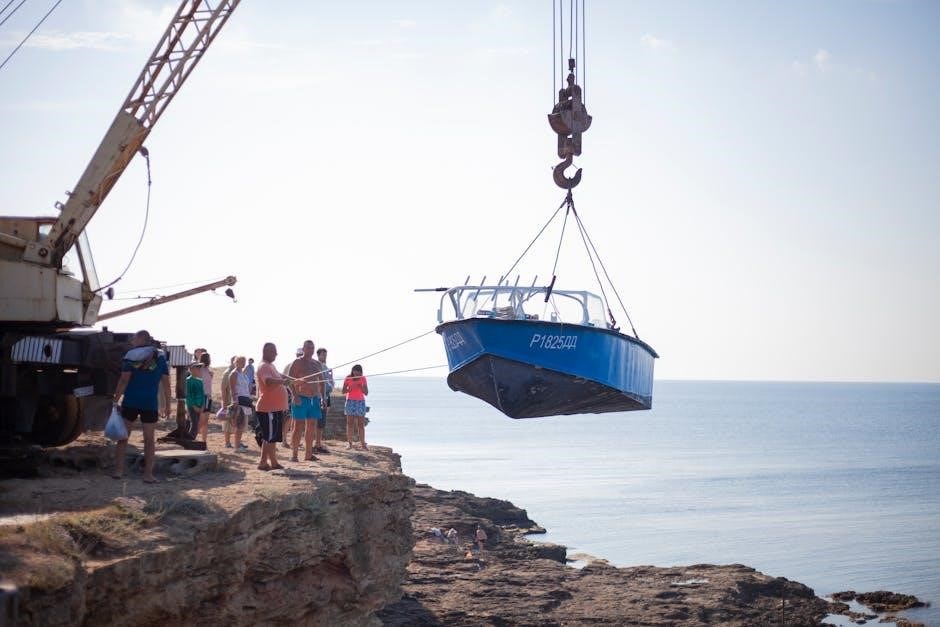
Approved Code of Practice (ACOP) and Guidance
The Approved Code of Practice (ACOP) provides detailed guidance on complying with LOLER 1998, ensuring safe lifting operations and equipment use. It is supported by HSE publications and British Standards, offering practical advice for employers and duty holders to meet legal requirements effectively.
Safe Use of Lifting Equipment: ACOP
The Approved Code of Practice (ACOP) for the safe use of lifting equipment under LOLER 1998 provides detailed guidance on ensuring compliance with the regulations. It emphasizes the importance of risk assessments, proper equipment selection, and safe operating practices. The ACOP also outlines requirements for thorough examinations, maintenance, and training for operators. While not legally binding, it offers practical advice to help duty holders meet their legal obligations, ensuring the safety of employees and others involved in lifting operations. Adhering to the ACOP helps minimize risks and promotes a safer working environment.
Additional Guidance from the Health and Safety Executive (HSE)
The Health and Safety Executive (HSE) provides comprehensive guidance to support compliance with LOLER 1998. This includes free downloadable resources, such as PDF versions of the regulations and accompanying ACOP. The HSE also offers practical advice on topics like equipment inspection, training requirements, and organizing lifting operations. These materials are designed to help employers and duty holders understand and implement the necessary safety measures effectively. By utilizing HSE resources, organizations can ensure they meet legal standards and maintain a safe working environment.
Role of British Standards
British Standards play a crucial role in supporting compliance with LOLER 1998 by providing detailed guidelines for the design, manufacture, and use of lifting equipment. These standards offer technical specifications and best practices, ensuring equipment meets safety requirements. They complement the Approved Code of Practice (ACOP) and HSE guidance, offering a robust framework for employers and duty holders. British Standards are widely recognized and can be obtained in PDF or hard copy formats from the British Standards Institution (BSI), further enhancing the implementation of safe lifting operations under LOLER regulations.
Relationship with Other Regulations
LOLER 1998 works alongside other regulations, such as the Health and Safety at Work Act 1974, to create a comprehensive safety framework for lifting operations and equipment.
Provision and Use of Work Equipment Regulations 1998 (PUWER)
PUWER 1998 ensures work equipment is safe, suitable, and properly maintained. It complements LOLER by setting general requirements for all work equipment, including lifting gear. Employers must assess risks, provide training, and maintain records. Non-compliance can lead to legal action. Both regulations aim to protect workers by enforcing safety standards and proper equipment management across various industries.
Essential Requirements and Compliance
LOLER 1998 sets essential requirements for lifting equipment, ensuring it is designed, manufactured, and maintained to withstand stresses. Compliance involves regular inspections and examinations by competent personnel. Equipment must meet British Standards and EU directives, with clear markings and documentation. Employers must ensure equipment is suitable for its intended use and that risks are minimized. Non-compliance can result in legal action, emphasizing the importance of adhering to these standards to safeguard worker safety and operational efficiency.
Integration with Health and Safety Legislation
LOLER 1998 integrates seamlessly with broader health and safety laws, such as the Health and Safety at Work Act 1974 and PUWER 1998. It complements these regulations by focusing specifically on lifting operations, ensuring a comprehensive approach to workplace safety. Together, these laws create a framework that minimizes risks associated with lifting equipment, fostering a safer working environment. This integration ensures consistency in legal requirements, making it easier for employers to comply with all relevant standards and protect their employees effectively.
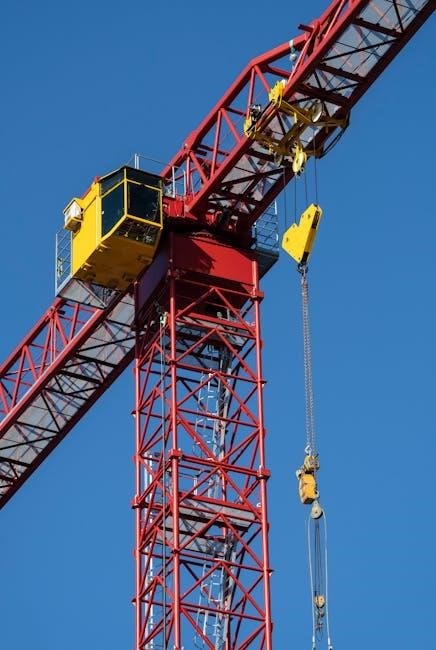
Exemptions and Specific Cases
LOLER 1998 includes exemptions for certain equipment, such as lifts used by the public and equipment used before December 1998, under specific conditions.
Equipment Exempt from LOLER 1998
Certain equipment is exempt from LOLER 1998, including lifts used by the public and equipment used before December 1998, under specific conditions. These exemptions ensure compliance for older or public-use equipment without compromising safety standards.
Special Provisions for Certain Types of Lifting Equipment
LOLER 1998 includes specific provisions for certain types of lifting equipment, such as lifts used by the public and equipment operational before December 1998. These provisions ensure tailored requirements for unique or legacy equipment, balancing practicality with safety standards.
Equipment Used Before December 1998
LOLER applies to all lifting equipment used for work purposes, including items in use before December 1998. Existing equipment must meet safety requirements, with some compliance deadlines extended until 2002 under PUWER 1998. This ensures a phased transition, allowing employers to update older equipment without compromising operational continuity.
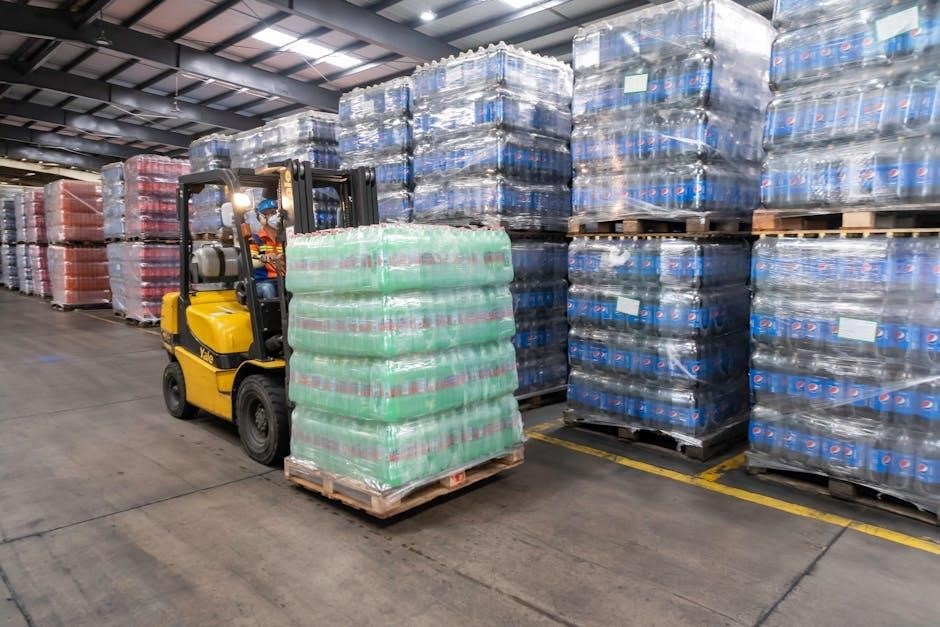
Penalties and Enforcement
Non-compliance with LOLER 1998 can lead to significant fines and legal action. The Health and Safety Executive (HSE) enforces these regulations, ensuring breaches result in appropriate penalties.
Non-Compliance and Legal Consequences
Non-compliance with LOLER 1998 can result in severe legal consequences, including substantial fines and potential prosecution. Employers and duty holders failing to meet the regulations face enforcement action by the Health and Safety Executive (HSE). Legal penalties are imposed to ensure adherence to safety standards, protecting both employees and equipment users from risks associated with poorly maintained or improperly used lifting gear. The HSE rigorously enforces these measures to maintain workplace safety and hold accountable those who violate the regulations.
Role of the Health and Safety Executive (HSE) in Enforcement
The Health and Safety Executive (HSE) plays a crucial role in enforcing LOLER 1998, ensuring compliance through inspections, investigations, and prosecutions. The HSE conducts regular workplace inspections to verify adherence to the regulations, focusing on proper equipment maintenance, examination schedules, and operator training. In cases of non-compliance, the HSE may issue improvement notices or prosecute offending parties, particularly when breaches pose significant risks to safety. The HSE also provides guidance materials and resources to help organizations understand and meet their legal obligations under LOLER 1998, fostering a culture of safety and accountability in the workplace.
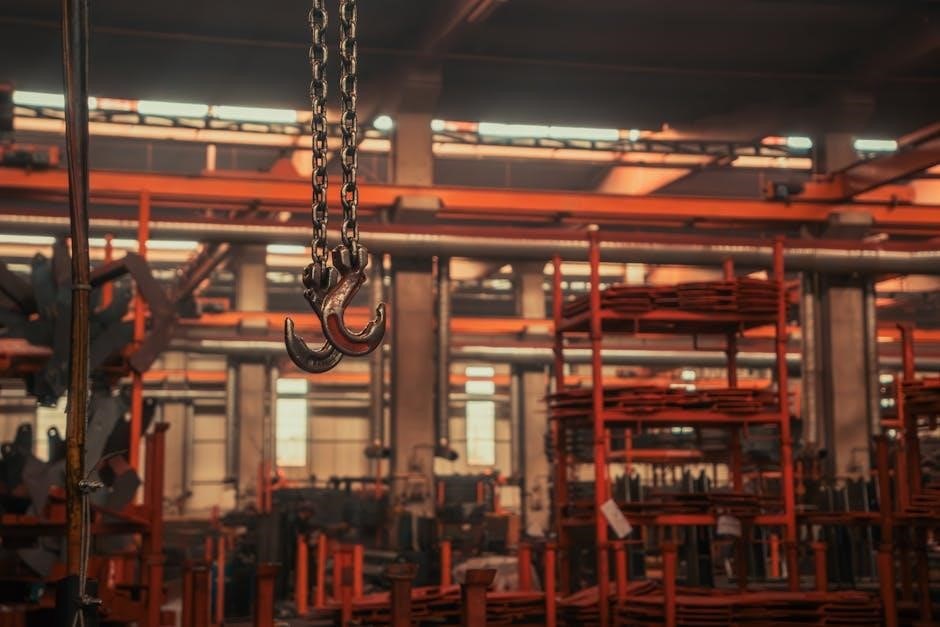
Guidance and Resources
The HSE provides free guidance, including the Approved Code of Practice and downloadable PDFs, to help organizations comply with LOLER 1998 and understand its requirements.
Free HSE Guidance and Publications
The Health and Safety Executive (HSE) offers free guidance and publications to assist with compliance. These include the Approved Code of Practice (ACOP) and downloadable PDFs. They provide detailed explanations of LOLER requirements, practical advice for employers, and checklists for inspections. The HSE also publishes web-friendly versions of their guidelines, making it easier for businesses to access and implement safety standards. These resources are essential for understanding and applying LOLER effectively in various workplaces. They ensure employers and duty holders are well-informed to maintain legal compliance and workplace safety.
Downloadable PDF Versions of LOLER 1998
Downloadable PDF versions of the Lifting Operations and Lifting Equipment Regulations 1998 (LOLER) are readily available online. The HSE provides free access to these documents, ensuring compliance is achievable for all workplaces. These PDFs include the full text of LOLER, along with guidance and explanatory notes. They can be accessed directly from the HSE website or through official legal resources. Regularly updated versions ensure users have the most current information, making it easier to stay informed and adhere to legal requirements. These resources are indispensable for employers and duty holders seeking clarity on regulatory obligations.
Training and Awareness Materials
Training and awareness materials for LOLER 1998 are widely available to support compliance and understanding. The HSE provides free downloadable resources, including guidance documents and PDFs, to help employers and employees grasp the regulations. These materials cover key areas such as planning lifting operations, equipment examination, and safe practices. They are designed to be accessible and practical, ensuring workplaces can effectively implement LOLER requirements. Regular updates and additional training tools from reputable sources further enhance awareness, making it easier for organizations to maintain safety standards and legal compliance.

Historical Context and Relevance
The Lifting Operations and Lifting Equipment Regulations 1998 (LOLER) were enacted to implement the EU’s Amending Directive to the Use of Work Equipment Directive (AUWED, 95/63/EC), enhancing safety standards for lifting operations in the workplace.
Background Leading to the Implementation of LOLER 1998
The implementation of LOLER 1998 was driven by the need to address gaps in existing health and safety laws, particularly regarding lifting equipment. Prior to 1998, there was no comprehensive legislation specifically targeting lifting operations, leading to inconsistencies in safety standards across industries. The European Union’s Amending Directive to the Use of Work Equipment Directive (AUWED, 95/63/EC) prompted the UK to develop LOLER, ensuring alignment with European safety requirements and providing a robust framework for managing lifting equipment risks.
The Amending Directive to the Use of Work Equipment Directive (AUWED, 95/63/EC)
The Amending Directive to the Use of Work Equipment Directive (AUWED, 95/63/EC) was a key driver for the introduction of LOLER 1998. This EU directive aimed to harmonize standards for work equipment across member states, emphasizing safety and user protection. It specifically addressed lifting equipment, requiring detailed provisions to ensure safe operations. The UK transposed this directive into domestic law through LOLER, creating a standardized approach to managing lifting risks and aligning British regulations with European requirements.
Evolution of Lifting Equipment Safety Standards
Lifting equipment safety standards have evolved significantly, driven by technological advancements and lessons from past incidents. Prior to LOLER 1998, standards were less comprehensive, often leading to inconsistent safety practices. The introduction of LOLER marked a pivotal shift, establishing clear, enforceable requirements for lifting operations. Over time, updates to British Standards and EU directives have further refined these regulations, ensuring they remain relevant and effective in safeguarding workers. This ongoing evolution reflects a commitment to improving workplace safety and adapting to new challenges in lifting operations.
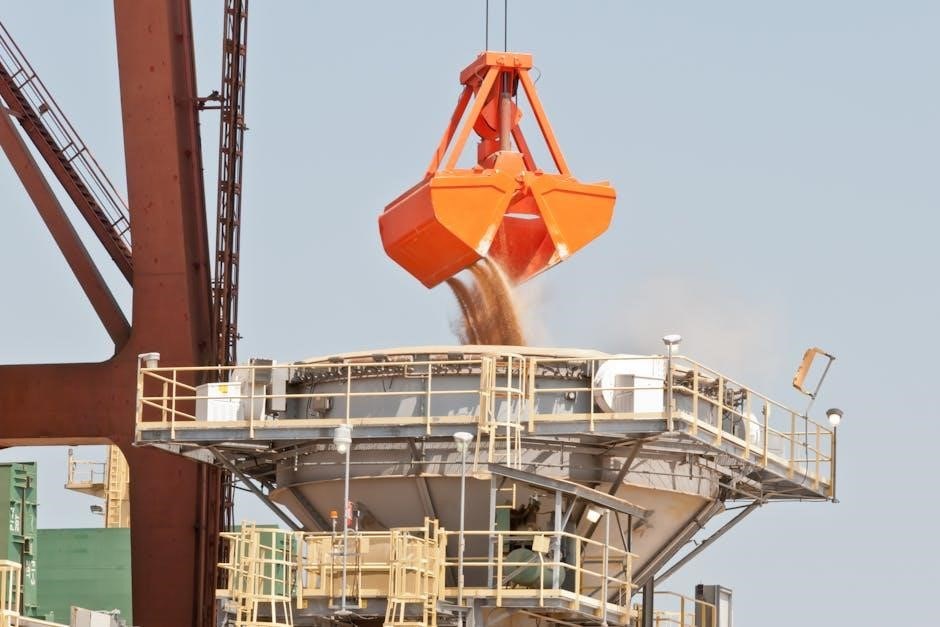
Case Studies and Practical Applications
LOLER 1998 applies to all lifting equipment used for work purposes, ensuring safety across industries like construction, manufacturing, and logistics. Real-world examples demonstrate its practical implementation, emphasizing compliance with standards and regular inspections to prevent accidents. British Standards and HSE guidance further support its application, providing clear frameworks for duty holders to follow;
Real-World Examples of LOLER 1998 in Practice
LOLER 1998 is widely applied across industries, ensuring lifting equipment safety. In construction, cranes and hoists undergo regular inspections to prevent accidents. Manufacturing facilities maintain overhead gantries and forklifts in compliance with LOLER standards. Warehouses use lifting equipment like pallet trucks and scissor lifts, adhering to inspection schedules. Healthcare settings utilize medical lifting devices, ensuring patient safety. Non-compliance can lead to penalties and reputational damage, reinforcing the importance of adherence. These examples highlight LOLER’s practical role in safeguarding operations and equipment, integrating with PUWER and British Standards for comprehensive safety frameworks.
Lessons Learned from Enforcement Cases
Enforcement cases under LOLER 1998 highlight the importance of compliance. Common issues include inadequate equipment inspections, poor maintenance, and insufficient training. Prosecutions often result in significant fines, emphasizing the need for robust safety practices. For instance, failures in crane and hoist inspections have led to accidents and legal consequences. Employers must ensure regular examinations, proper record-keeping, and staff training to avoid such outcomes. These cases underscore the HSE’s commitment to enforcing LOLER standards, protecting workers, and maintaining operational safety across industries.
Industry-Specific Applications of LOLER
LOLER applies across various industries, ensuring tailored safety standards. Construction sites require rigorous crane and hoist inspections, while manufacturing focuses on machinery and material handling. In healthcare, patient lifting equipment must meet specific safety criteria. Warehousing and logistics emphasize proper forklift operations and load management. Agriculture adheres to guidelines for farm-specific lifting gear. Each sector adapts LOLER to its unique challenges, ensuring compliance and worker safety through industry-specific implementations and regular equipment checks, fostering a culture of safety tailored to operational needs.
Glossary of Terms
Key terms under LOLER include “lifting equipment,” “lifting operation,” and “duty holder.” These definitions clarify responsibilities and standards for safe equipment use and maintenance practices.
Definitions of Key Terms in LOLER 1998
Lifting equipment refers to devices used to lift loads, while a lifting operation is any action involving lifting. A duty holder is responsible for ensuring compliance with regulations. Other key terms include “load,” “lifting accessories,” and “examination.” These definitions are crucial for understanding legal obligations and ensuring safety standards are met. Proper interpretation supports effective implementation of the regulations across various workplaces, helping to prevent accidents and maintain compliance with health and safety laws.
Understanding Technical Terminology
Technical terms in LOLER 1998 include “rated capacity,” referring to the maximum load a device can handle safely, and “thorough examination,” meaning a detailed inspection by a competent person. “Lifting accessory” describes components like slings or shackles, while “load” encompasses any item being lifted. “Work equipment” is defined as any machinery used at work. Understanding these terms ensures compliance with the regulations, enabling employers and duty holders to implement safety measures effectively and maintain workplace safety standards as outlined in the LOLER guidelines. Clear comprehension helps prevent operational risks and legal issues.
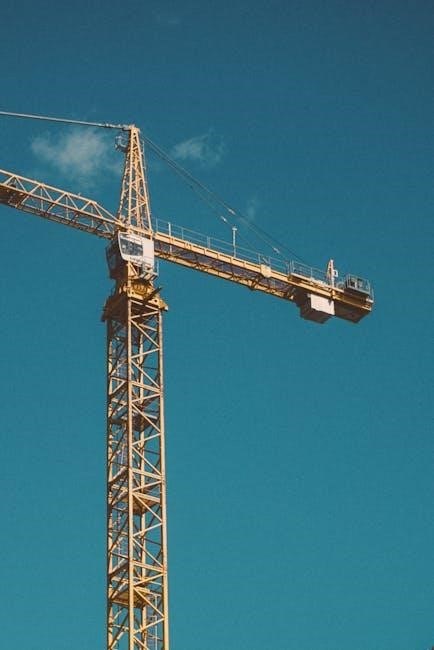
Training and Competence
Employers must provide adequate training for lifting equipment operators, ensuring competence in safe operations. Supervisors should also receive training to oversee lifting tasks effectively and safely.
Training Requirements for Operators and Supervisors
Operators and supervisors must receive comprehensive training to ensure safe lifting operations. Training should include practical and theoretical knowledge of equipment, safe practices, and legal obligations. Employers are responsible for ensuring that all personnel involved in lifting operations are adequately trained and competent. Supervisors must understand risk assessments and legal duties to oversee operations effectively. Training should be tailored to the specific equipment and risks involved, with refresher courses provided to maintain competence levels. This ensures compliance with LOLER 1998 and promotes workplace safety.
Competence Assessment and Certification
Competence assessment ensures individuals are capable of safely operating or supervising lifting equipment. Employers must verify operators’ and supervisors’ abilities through training and evaluation. Certification is not mandatory under LOLER but is often recommended to demonstrate compliance. British Standards provide guidance on training and competence levels. Regular reassessment is required to maintain certification, ensuring ongoing safety and adherence to legal standards. This process helps prevent accidents and ensures lifting operations are conducted effectively and in line with regulatory requirements.
Future Updates and Revisions
The Health and Safety Executive (HSE) periodically reviews and updates LOLER to reflect technological advancements and evolving safety standards, ensuring continued relevance and compliance.
Proposed Changes to LOLER 1998
Proposed changes to LOLER 1998 aim to enhance safety and adapt to new technologies. The Health and Safety Executive (HSE) may introduce updates to align with EU directives, improve inspection standards, and expand the scope of equipment covered. These changes are expected to streamline compliance processes and address emerging risks in lifting operations. The HSE consults with industry stakeholders to ensure revisions are practical and effective. Any updates will be published in revised guidance documents and PDF versions of the regulations.
Impact of New Technologies on Lifting Equipment Regulations
New technologies, such as automated and robotic lifting systems, are influencing updates to LOLER 1998. These innovations require revised safety standards to ensure compliance. The HSE is considering how to integrate digital solutions and IoT devices into regulatory frameworks. Additionally, advancements in material science and software are driving changes in equipment design and maintenance. These technological shifts necessitate ongoing reviews of the regulations to ensure they remain effective and relevant in modern workplaces. The focus is on balancing innovation with safety to protect workers and equipment.